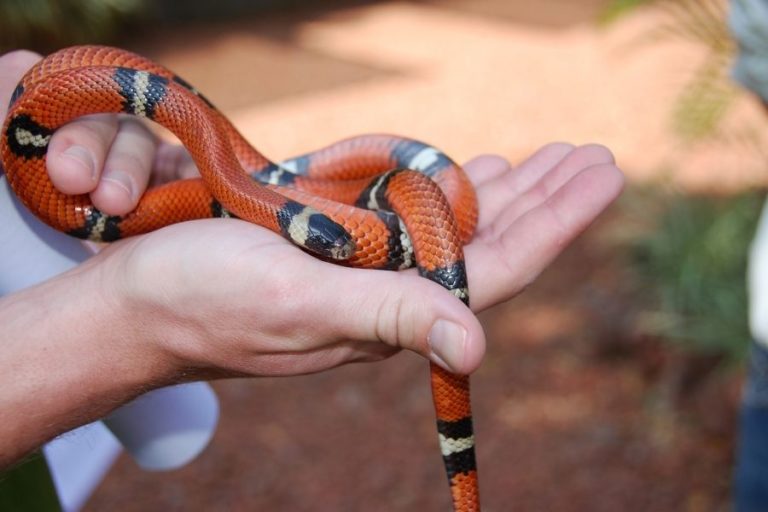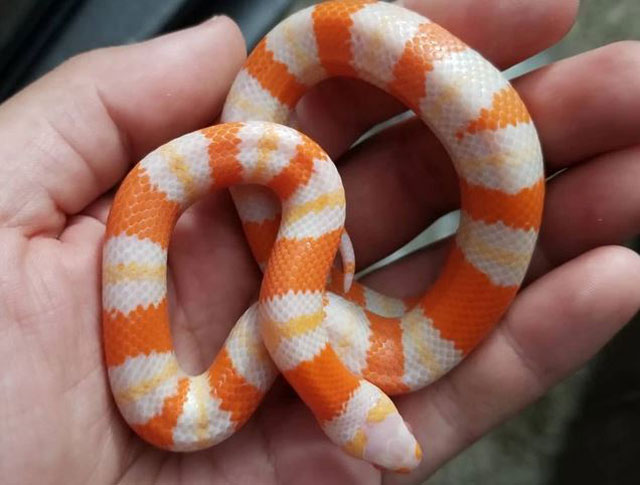

One of the things that coral snakes have in common with all the other elapids is that they are front-fanged snakes, just like cobras, kraits, mambas and taipans.Įastern coral snake ( Micrurus fulvius) skullĮlapids are different from vipers like rattlesnakes in that their fangs don’t fold back, so they have to be pretty small to fit inside their closed mouths. Rear-fanged or front-fanged?Ī common misconception about coral snakes is that they are rear fanged, but they’re not. tener), and the Arizona coral snake ( Micruroides euryxanthus). The US has only three species of coral snakes: the eastern coral snake ( Micrurus fulvius), the Texas coral snake ( M. Members of this family are called elapids, and aside from sea snakes, coral snakes are the only elapids found in the Americas, where there are more than 60 species in three genera: Micrurus, Micruroides and Leptomicrurus. This is the same family that snakes like cobras, mambas and sea snakes belong to. Yes, antivenom for coral snakes is back in production.Ĭoral snakes are members of a large family of venomous snakes called Elapidae.Venom toxicity does not correlate very well with “dangerousness.”.The “red-on-yellow” rhyme is not 100% reliable, especially outside the US.Coral snakes do not have to chew to envenomate.Coral snakes are front-fanged, not rear fanged.The average size for a South Dakota Bullsnake is around 3 feet a very large one might be around 5 feet long. Since our beginning in 1937, we have never had one close to that size brought in. The record size for a Bullsnake is reputed to be 102 inches. Many times we have heard tales of a Bullsnake so long that as it crawled across the road its head was in the ditch on one side of the road and its tail in the ditch on the other side of the road! Alas, this could only happen if the snake had been killed and chopped in half. The other "big" snake we have in South Dakota is the Bullsnake (Pituophis catenifer sayi). In South Dakota, the average length for a rattlesnake is 2 to 3 feet with a really big one topping out at around 4 feet in length. But, in all the years we have been in existence, we have never seen a true 6-foot Prairie Rattler. The world record for a Prairie Rattlesnake is right around 6 feet long. Hearing wild stories about huge rattlesnakes or other local snakes in South Dakota, the facts are simple: Even baby rattlesnakes have a small rattle but the tail is very short and stumpy until it sheds a few more times and adds a few more segments. If the tail has a rattle or if it rounds off like the end of your finger it is likely to be a prairie rattlesnake. The first thing we ask callers to do is to look at that tail of the suspected snake: Here in South Dakota it’s fairly easy to tell which are dangerous and which are not - If the tail comes to a point like a toothpick it would be one of our native harmless snakes. They will coil up, hiss, strike, and even shake their little rattle-less tails. Two local species have young that are colored much like rattlesnakes for this very reason - to fool predators.īaby Bullsnakes and baby Eastern Yellowbellied Racers (also known locally as Blue Racers) bear an uncanny resemblance to young rattlesnakes. Many times the snakes people are seeing are not rattlesnakes at all. We get many calls, especially in the spring and early summer, about baby rattlesnakes. If you roll one onto its belly, it will promptly roll right back over on its back. Unfortunately the poor snake doesn't quite have the whole dead act down quite right. If that fails it will roll over on its back, loll out its tongue, and pretend to be dead. If threatened a Hognose Snake will hiss and puff up its head (hence the Puff Adder moniker). They are renowned, however, for their remarkable defense display. This innocuous little snake is quite harmless to most everything except its favorite food, toads. The snake referred to in this instance is the Western Hognose Snake. The most common venomous snake story we hear is about the "South Dakota Puff Adder." Some people even claim this snake is so deadly its mere breath can kill you. They are fairly common but rarely seen due to their secretive nature. What you have is a shy and harmless Pale Milk Snake (Lampropeltis t.

Coral snakes are not found within about 700 miles of South Dakota. That little snake you just found under a log or in the garage is not a coral snake. Many people believe some of our other snakes are venomous but luckily for most of us, such stories are myths. South Dakota has just one venomous snake species, the Prairie Rattlesnake (Crotalus v. How many types of venomous snakes live in South Dakota? We have 8 species of lizards, 7 species of turtles, and 17 species of snakes. South Dakota is home to many species of reptiles.


 0 kommentar(er)
0 kommentar(er)
